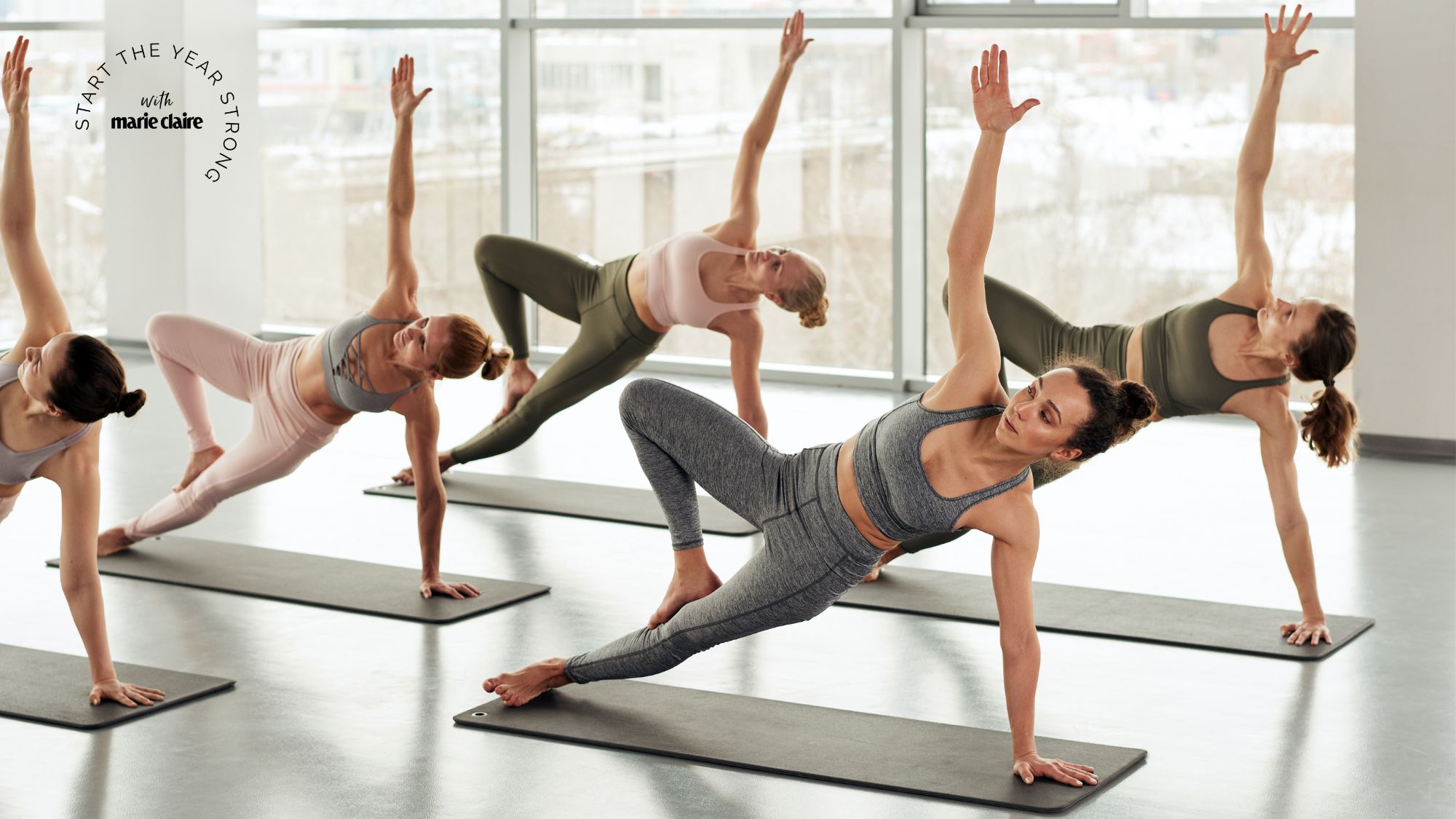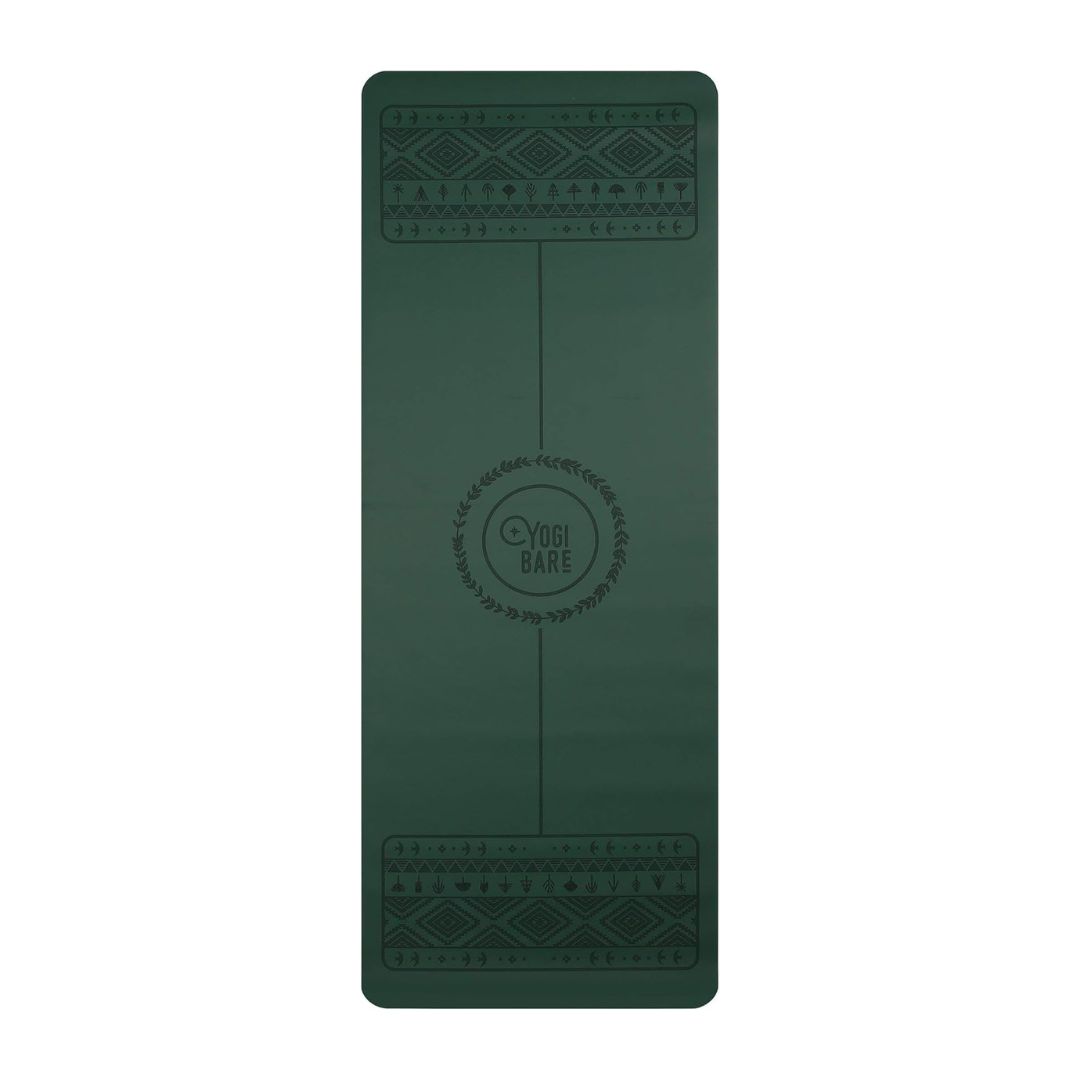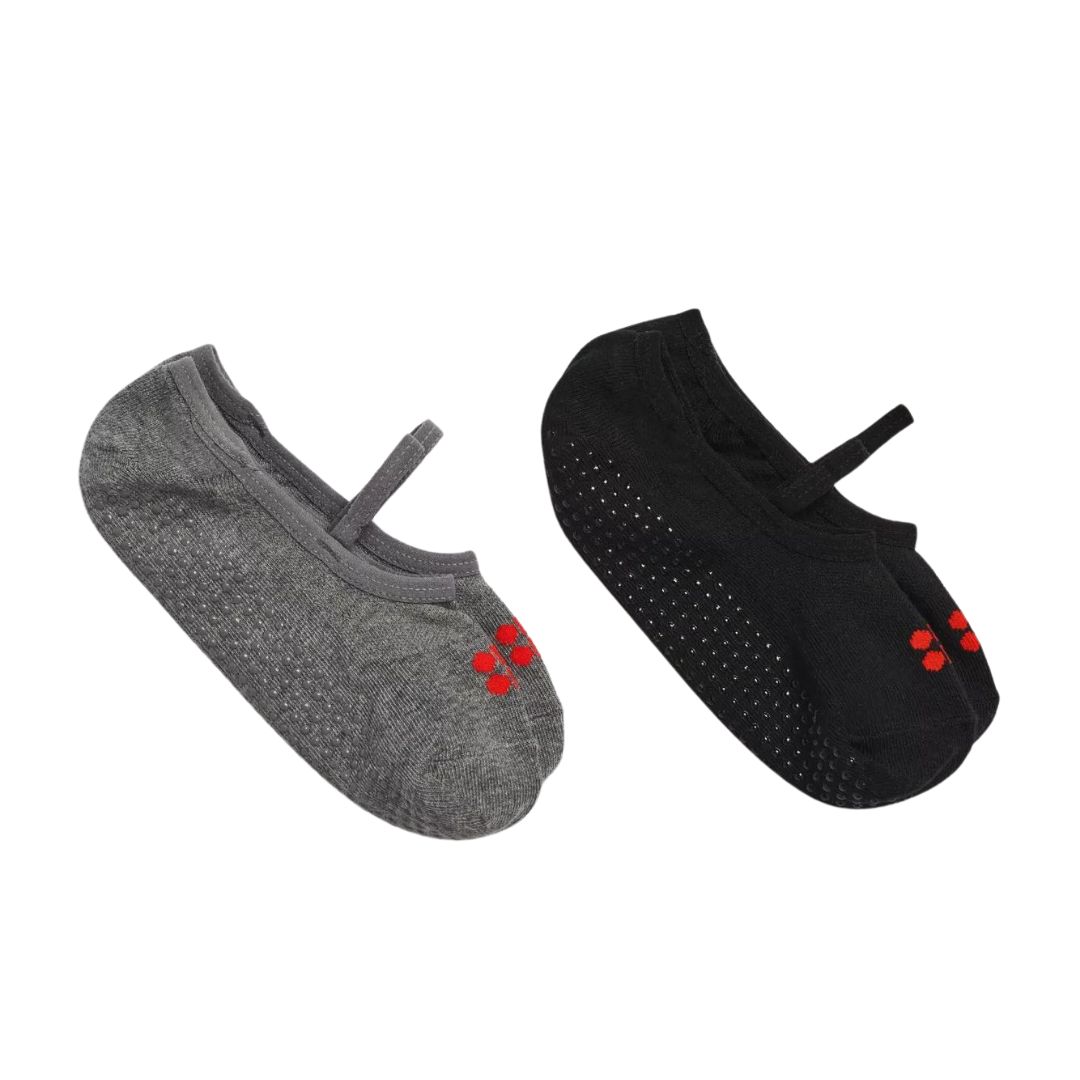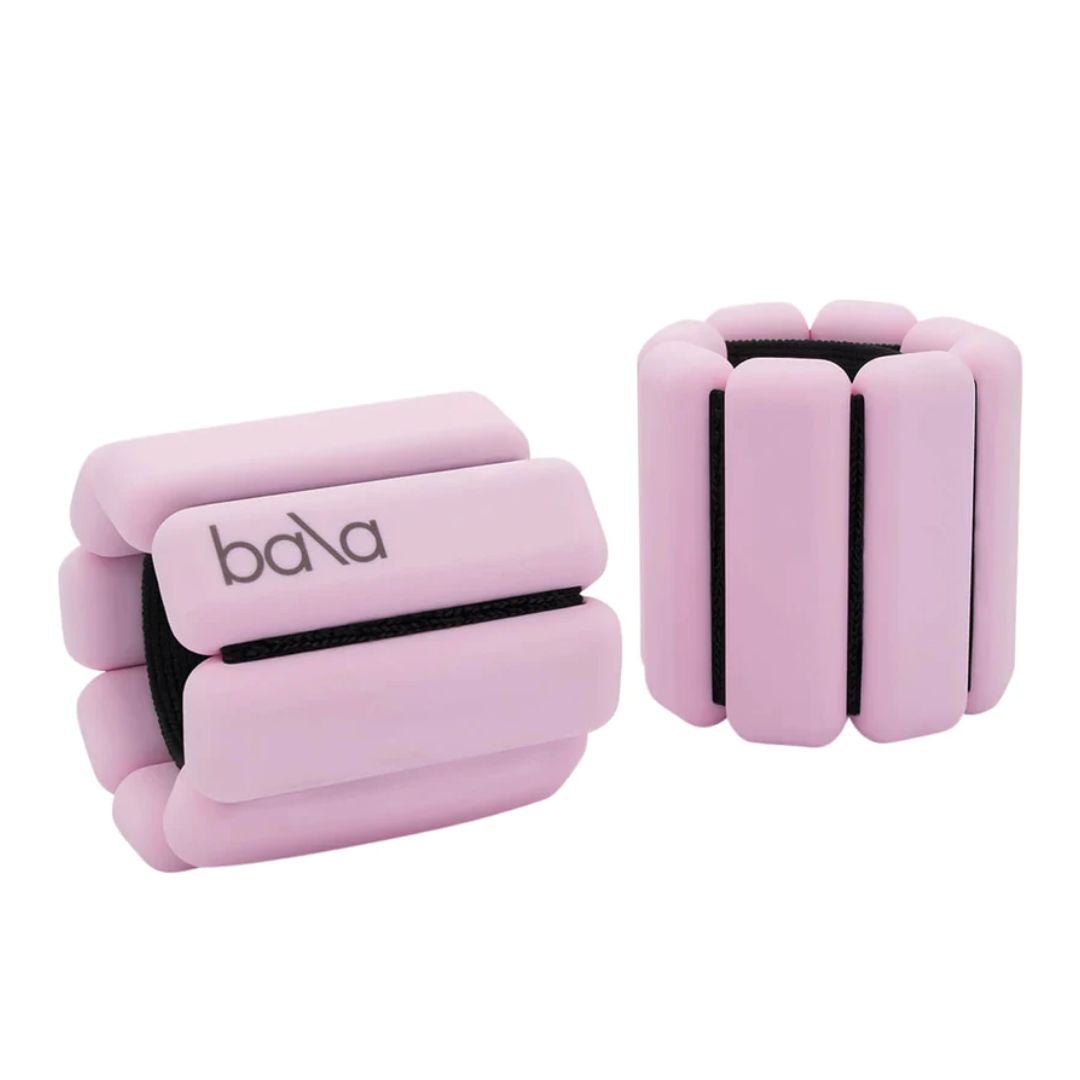Considering giving Pilates a go? A coach shares how difficult it actually is for beginners
Plus, some expert-backed tips on where to start.


Have you decided 2024 is the year you take the plunge and try out Pilates? Firstly: congratulations. And secondly, if you’re feeling a little bit intimidated and left wondering, is Pilates hard for beginners? We’ve got the answers for you.
As it turns out, this low-impact workout is ideal for newbies and for a multitude of reasons. For starters, Pilates can be adapted to your fitness level. So you might start with ten or 20-minutes Pilates workouts and, as you perfect your practice, you could add some extra resistance to your flow with a wall Pilates workout or Reformer Pilates class.
That said, if you're more of a home workout fan, you take it up a notch at home with some props, like a ball or Pilates ring. Another brilliant thing about Pilates is the fact you only really need to do a couple of sessions a week to see the fruits of your labour. It’s probably why the ever-growing list of celebs, like Lori Harvey, Hailey Beiber, Harry Styles and Margot Robbie, have made it central to their workout regime.
Still unsure of whether or not Pilates is for you? Keep scrolling to discover our run-through of what Pilates is, plus the many benefits of Pilates you'll reap if you practice regularly. Below, top experts share their top tips for getting started, plus share guidance on just how often new recruits should be aiming to practice. Be sure to familiarise yourself with the best Pilates workouts, the top Pilates exercises to include in your practice and our detailed guide to Pilates for beginners, while you're here.
Is Pilates hard for beginners? Your guide
What is Pilates?
Pilates might have only blown up on Insta and TikTok in more recent times, but this form of mind-body exercise has been around for more than 100 years. It was developed in the early 20th century by German physical trainer Joseph Pilates as a way to build strength, balance and flexibility in the body.
So what exactly does it involve? “It's a form of strength training which takes a holistic approach to exercise and maximises mind-muscle connection, spinal mobility, breath control and deep core engagement,” Natalie Rose Edwards, personal trainer and founder of Body By Barre Studio shares. And in Edwards' eyes, "it's a fantastic way to develop strength, sculpt your muscles, and improve overall well-being.”
Nowadays there are different types of this low-impact workout, from mat-based practices to Reformer Pilates. There’s even wall Pilates and various different tried and tested techniques like the viral 3-2-8 method (which Edwards is the creator of) to get on board with. Bottom line: there are loads of ways to include it in your weekly workout regime.
Celebrity news, beauty, fashion advice, and fascinating features, delivered straight to your inbox!
Can you try Pilates at home?
You absolutely can. However, if you're a Pilates newbie it’s a very good idea to do so while being guided by a professional either through YouTube or an app or challenge, like this 24-day Pilates challenge.
“Following a trainer on screen, who coaches you and guides you correctly, is important," explains Edwards. "Pilates is not just a sequence of movements. Every action has a breath to match, while also focusing on alignment, posture and flexibility,” she continues. Failure to do so without cues can be potentially ineffective.
7 benefits of Pilates
We could wax lyrical about the long list of positives this form of fitness brings - so much so, we even wrote a whole article dedicated to the benefits of Pilates.
But to put it simply: along with giving your posture a boost, decreasing back pain, increasing lean muscle mass, improving blood flow and reducing aches and pains, Edwards tells us that Pilates also has the potential to:
- Improve coordination and balance
- Improve overall well-being
- Boost energy levels (one study found it improves cardiorespiratory fitness and therefore promotes oxygen flow and blood circulation)
- Support digestion, thanks to the many twists and turns included in a Pilates flow that can act as lymphatic drainage.
- Reduce the risk of osteoporosis (research published in The Journal of Back and Musculoskeletal Rehabilitation found Pilates works to increase bone mineral density).
- Reduce the risk of disease
- Improve your mental health (one 2020 study in particular concluded that Pilates had the power to "significantly’ reduce anxiety, feelings of fatigue and negative thought patterns.")
Is Pilates hard for beginners?
Now, to the question at hand. Any form of exercise can feel intimidating, especially if you’ve never tried it before. But one of the best things about Pilates is the fact you can tailor your practice to your fitness level, whether you’re a newbie to exercise or movement has been ingrained in your every day for years.
In Edwards' opinion, Pilates is perfect for beginners. Edwards explains: “The foundation of a Pilates class breaks down breath, posture, alignment and form throughout every exercise, so it really brings you back to basics, helps improve the mind-muscle connection, and improves your alignment with each movement.”
She continues: “Beginners can really benefit from slowing everything down,” Edwards adds. “Of course, in more advanced classes the exercises would be harder, however, the foundation remains the same.”
4 tips for Pilates beginners
If you’re keen to give Pilates a try but wondering where to start, we asked Edwards to share some words of wisdom.
1. Start small
Rome wasn’t built in a day and the same goes for perfecting your Pilates practice. So? “Start small and enjoy the process,” Edwards suggests.
“This could be as short as ten mins, one to two times per week,” Edwards says. “Then progress to 20-40 mins and start to add equipment like ankle weights, light hand weights, Pilates ball or rings.”
This way, you will learn and understand the core principles of Pilates, ace your form and build on your strength week after week. Then, once you’ve built a strong foundation on the mat, you could work your way up to a Reformer Pilates class.
2. Focus on your form
Form is key when it comes to any exercise. Not only will the correct form help you unlock the wide-ranging benefits of Pilates, but it will help minimise your risk of injury, too.
Edwards advises following YouTube videos or workouts from qualified trainers, not just influencers, too. “Every action, breath, tempo and movement has to be broken down to really maximise your results, which means it's important that you take Pilates from a certified coach and not just Instagram influencers," she explains. "This is the foundation of Pilates and how it should be coached at an accredited or qualified level."
3. Download an app
Once you’ve mastered the basics, the world is your oyster. Whether you choose to take on a wall Pilates challenge to mix things up or just prefer to perfect your practice at home, an app can coach you week in, week out and take your love for the exercise up a notch.
“The Body By Barre App has a beginner programme that features all Pilates mat and barre workouts between ten to twenty minutes from home,” Edwards explains. “We also progress you to more advanced things like mini ball, barre, Pilates pump - there are lots of options to progress your practice.”
4. Focus on progression over perfection
And above all? “Enjoy the process,” Edwards adds. “Pilates is a very satisfying practice which has so many benefits as you learn more and develop your understanding.”
“I love Pilates - I now have more flexibility and my joints ache less”
Annabelle Charlotte Baugh, 45, is the founder of Cosmetic Surgery Advancements. She started doing Pilates as a way to manage her fibromyalgia pain and fatigue (she also suffers from osteoarthritis). She turned to this form of fitness as she wanted something that was low impact and could help her build muscle strength. Here’s what she had to say...
“I had my first hip replacement when I was 38 and my second one when I was 43. Pilates wasn't specifically recommended, but I was advised to do stretches and low-impact exercises."
“I started doing Pilates lessons recently and have since been doing a class every evening. I have more flexibility and my joints ache less I would say overall my symptoms have decreased from a seven to a four in intensity. Focusing for longer periods is also easier and I have more energy.
“Pilates improves the mobility and strength of each of the muscle groups throughout the body and your deep core muscles. It enhances spinal alignment, strength, agility, balance, and energy levels, as well as a general appreciation of one's own body. Plus it's so simple and you can easily follow YouTube videos or join online lessons if you want to do Pilates at home.”
Shop MC UK's top Pilates buys now

There's no better way to help cushion your joints during your at-home Pilates practice — featured in our guide to the best yoga mats, this Yogi Bare Paws is made from all-natural rubber sourced from sustainable forest. It's free from animal testing and 100% vegan. Plus, the packaging is 100% recyclable. Winning!
How often should I do Pilates as a beginner?
Broadly speaking, those new to Pilates exercises should practise this form of fitness two to three times a week. Research shows that just two sessions every seven days for twelve weeks can have beneficial results, especially when it comes to abdominal strength, upper spine posture and stability of your core posture.
A 2023 study found that practising Pilates for an hour three times a week can give your respiratory system a boost, along with increasing abdominal strength, endurance, and hip and shoulder joint mobility.

Rebecca, or Becks, is a freelance journalist with more than ten years of experience in the industry. She specialises in all things health and lifestyle and has written for a number of brands including Women's Health, Stylist, the Evening Standard, Good Housekeeping, The Telegraph, Live Science, Tom's Guide and Fit&Well. Becks also writes copy for a number of brands and small businesses.
When she's not weight training, tracking down the best gym leggings, reading a book or at her desk typing away, you'll find her in the kitchen perfecting a new recipe or bake.

